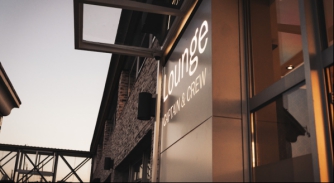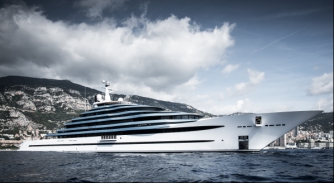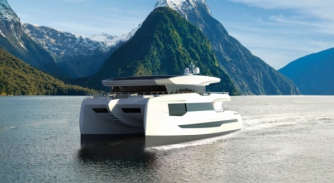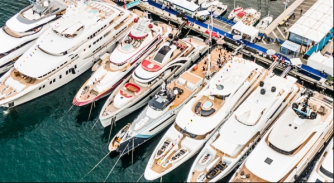Demand, supply & quality concerns
Is it inevitable that the quality of new builds will fall as a result of supply chain issues and limited capacity?
The reports of gigantic order books, in some cases stretching to 2026-2027, paint an extremely positive picture of the superyacht industry. However, is it inevitable given the current global economic climate that the new build industry is going to run into bottlenecks as a result of limited subcontractor capacity and various raw material supply issues? Or will the challenge of the coming years provide the necessary environment for the new build market to adapt, evolve and rise to the occasion?
“First of all, it is important to take care to point out that none of us has a crystal call. However, what we can say is that, at least currently, there are soft signals that the market’s strong performance may be more than just short-term,” starts Olivier Blanchet, head of jet and yacht finance at BNP Paribas. “The levels of activity at the moment are akin to those we experienced in the mid-to-late 2000s, it is amazingly active.”
Blanchet cites a number of reasons for the market’s current purple patch in new build activity. There are, of course, emotional reasons for the uptick in activity. As has been well reported, the uniquely isolated environment caused by the COVID-19 pandemic has caused many UHNWIs to realign their priorities with a focus on ensuring that they are able to enjoy the time available to them, as part of this phenomenon superyachts have risen to the fore as a popular option because of their potential for enjoyment, security and sanitary safety. There is, however, a more objective and financial reason for UHNWIs investing in luxury assets at this point.
“Inflation has an interesting effect on how people spend their money,” continues Blanchet. “There is a simple consideration to take into account in that at present in Europe there are negative interest rates. Any bank in central Europe that has its excess placed with the European Central Bank will be charging negative interest rates and, given that yachting is primarily a Euro market, this has had a profound effect on the market. For instance, if you put €100 into the banks today, it will be worth less next year. If, therefore, you are to have a depreciating asset, why not invest in an asset you can enjoy?”
While it is inevitable that the depreciation curve of the purchase of a superyacht will outweigh the impact of negative interest, the enjoyment gained from the use of the asset has made superyacht purchases all the more attractive. When considered in conjunction with the emotional factors, this has created almost a perfect storm for superyacht acquisitions.
“The European Central Bank intends to push everybody towards consumption rather than saving,” explains Blanchet. “However, these phenomena only account for the superyachts sharp rise in demand. When considering the long-term efficacy of this growth in demand, we must also consider the demands that this is placing on the supply chain. Today, if you wish to build at one of the more renowned northern European or Italian yards, you are looking at taking delivery in 2026 or 2027. In conjunction, there is a global shortage of raw materials across major manufacturing sectors, and it is clear that there is going to be a supply chain bottleneck. The demand is here, but I am not convinced the supply chain will be able to follow.”
As a result of raw material challenges, as well as yard and subcontractor capacity issues, is it possible that the quality of deliveries may fall? In order to account for raw material and subcontractor shortages, shipyards may be forced to order materials from new suppliers and contract with less experienced subcontractors.
“In the short-term, deliveries expected up to 2024, it may be less of an issue. But in the years beyond it is possible that we will see an impact on quality,” says Blanchet. “In recent years, the order book has been such that shipyards and subcontractors have had the necessary space and time to ensure that every project was perfect. But, with bottlenecks ahead, production will have far less scope for error, adaptation and perfection. If the shipyards want to meet their demanding schedules, something may have to give, which may cause further issues when it comes to warranty periods and so on.”
While there is no guarantee this eventuality will come to pass, as highlighted by Blanchet’s initial caveat, the logic that he sets forth makes a great deal of sense and rings true with concerns that have been echoed by various other factions. That being said, during challenging (and exciting) periods, companies often find their best opportunities to adapt and evolve their practices and, it must be hoped, that this period of high demand causes superyacht manufacturing to mature and improve across the board, therefore having a positive impact on the superyacht projects of the future.
NEW: Sign up for SuperyachtNewsweek!
Get the latest weekly news, in-depth reports, intelligence, and strategic insights, delivered directly from The Superyacht Group's editors and market analysts.
Stay at the forefront of the superyacht industry with SuperyachtNewsweek
Click here to become part of The Superyacht Group community, and join us in our mission to make this industry accessible to all, and prosperous for the long-term. We are offering access to the superyacht industry’s most comprehensive and longstanding archive of business-critical information, as well as a comprehensive, real-time superyacht fleet database, for just £10 per month, because we are One Industry with One Mission. Sign up here.
Related news

“Crew have to care about the boat, we have to care about them”
Porto Mirabello completes the next stage of its development with the opening of its captains and crew lounge
Crew

A lot of waste
Might a realignment of priorities allow the application process to reduce its waste significantly?
Technology

Out now, the new SuperyachtNews app!
The new SuperyachtNews app provides access to business-critical news, data, video content and various communications and events features
Business

SILENT-YACHTS sells first unit of its new flagship - the SILENT 100 Explorer
The first SILENT 100 Explorer has been sold after its unveiling at the 2021 Cannes Yachting Festival
Fleet

A new build quandary
Has the threat of inflation and rising raw material costs created a win-win or a lose-lose scenario?
Owner

The pricing problem
Could the shift into a sellers’ market have a long-term impact on pricing for the brokerage sector?
Owner
Related news
A lot of waste
3 years ago
Out now, the new SuperyachtNews app!
3 years ago
A new build quandary
3 years ago
The pricing problem
3 years ago
NEW: Sign up for
SuperyachtNewsweek!
Get the latest weekly news, in-depth reports, intelligence, and strategic insights, delivered directly from The Superyacht Group's editors and market analysts.
Stay at the forefront of the superyacht industry with SuperyachtNewsweek




